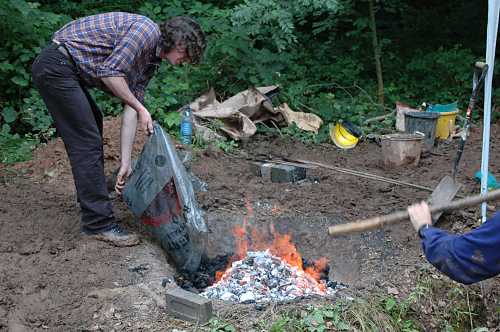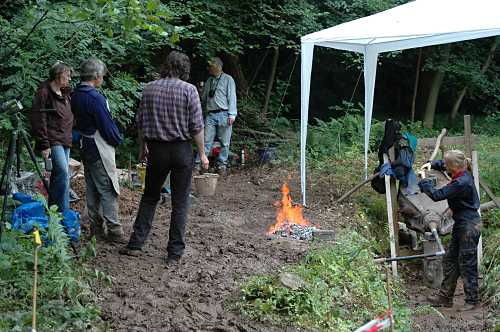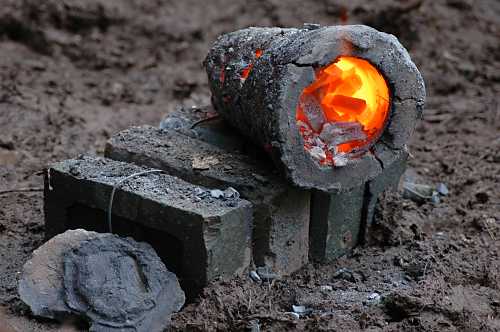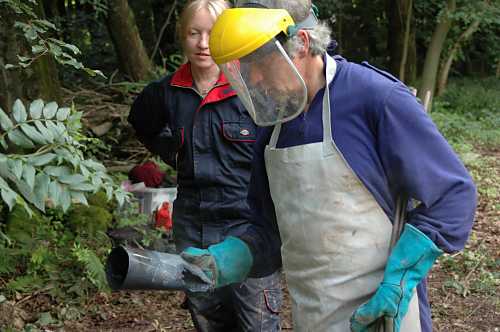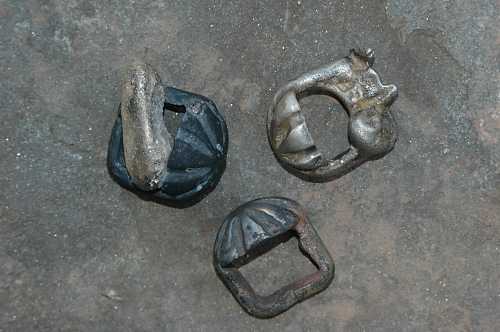Last day of the bell casting
, 20 July 2009
Festival of British Archaeology 2009
Tim Young’s attempts to replicate an Early Medieval church bell continued beside the Celtic Village today with the help of a team of volunteers who answered any questions that visitors to the museum had about the project.
It’s an industrial-sized operation, with gigantic bellows hanging from a wooden frame, and fire roaring from the furnace. Its aim was to coat a wrought iron bell with bronze in a process known as brazing. This involves encasing the bell, wrapped with strips of bronze, inside a clay mould and placing it in the fire. As the temperature rises the bronze melts and spreads over the surface of the bell giving it a fine, orange / yellow sheen.
Yesterday the problem was that the fire was too hot and the iron burnt out, today the problem was the exact opposite. Tim had two bells ready to go in their clay casings. Wary from yesterday’s experience he took one out a little early and the bronze hadn’t melted. Then it was a race against time to raise the temperature of the fire, while stocks of charcoal began to run low.
Thanks to vigorous bellow’s work, and some extra charcoal from Andrew Murphy, the museum’s blacksmith, the temperature was raised and the bronze melted on the final bell. Success! Partly. A crack in the side of the clay casing meant that part of the iron burnt away again, and some of the bronze escaped. Even so, Tim and his team have proved their approach works.
Better still, alongside the bell casting, they also tried to braze three Early Medieval iron strap slides which Andrew made based on an example from Llangorse, near Brecon. As you can see from the photographs, they had one great success, one partial success, and a near miss. With a little filing, the best of these should make a great display piece to set beside the original in the museum’s archaeology gallery.

